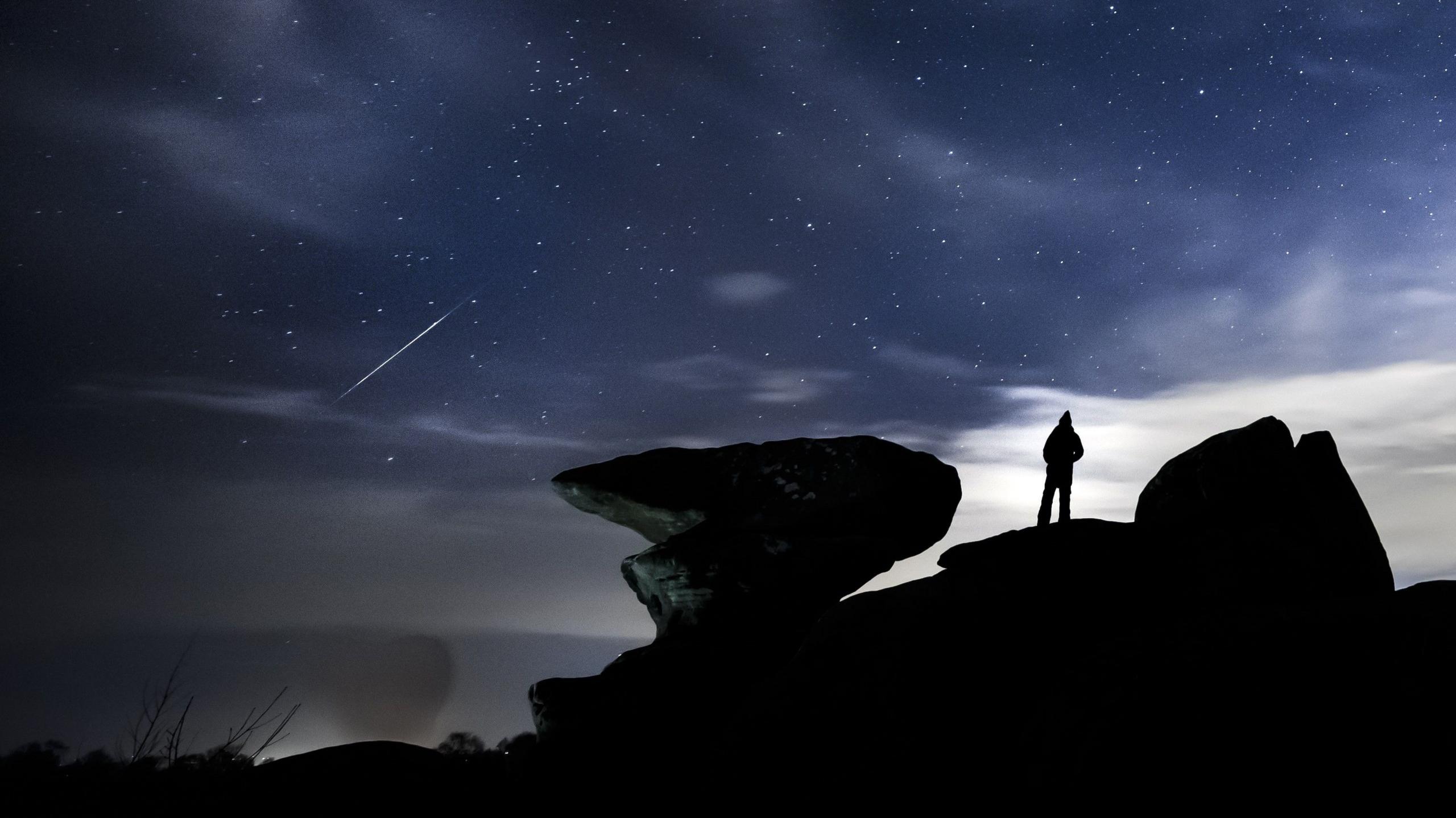How to see Leonid meteor shower as it peaks on Sunday night

- Published
Look to the skies late on Sunday night into early Monday morning and you may well see some shooting stars as the Leonid meteor shower peaks.
The Leonids are an annual event and can be seen from the start of November until 2 December.
This year's display will peak on the morning of 18 November when 10-15 meteors per hour could be visible.
The meteors will appear as streaks of light in the night sky.
Where do the Leonids come from?
All meteor showers originate from the debris field of comets or asteroids.
The debris, which can be as fine as a grain of sand, burns up with the friction as it hits the Earth's atmosphere. This sends a fast, bright streak of light through the sky, visible to the naked eye.
Every November the Earth passes through the debris of Comet Tempel-Tuttle, which gives us the Leonid shower.
We will need clear skies to view them but will the weather cooperate?
What is the forecast?
The clearest skies are likely in Northern England, Scotland and Northern Ireland with cloud and outbreaks of rain for Wales and most of south England.
Temperatures could drop as low as minus 8C in parts of central and eastern Scotland - so don't forget to wrap up, if you're heading outside!
You can stay in touch with the latest forecast on the 麻豆社 Weather website or app.
Viewing will also be hampered by the waning gibbous moon at 93% of its full illumination and present in the sky throughout the night.
The Leonids appear to emanate from the constellation of Leo which is high in the pre-dawn sky at the end of November
How can I see it?
Wait until after midnight when the constellation of Leo rises in the east. Find the Plough and trace a line down from the two stars on the right until you find Regulus, the brightest star in the constellation of Leo.
The meteors will appear to radiate from the head of the lion, just above Regulus.
You will need to stay away from city lights and give yourself a good 20 minutes to let your eyes adjust to the darkness.
Finally, wrap up warmly. Where clear skies last through the night temperatures are likely to drop below freezing.
If you do capture any good meteor pictures, you can upload them to 麻豆社 Weather Watchers and we might use them in our broadcasts.
And if I miss them?
On occasions, usually once every 33 years, the Leonids can produce a spectacular storm rather than a shower with thousands of meteors per hour.
The last such event happened in 2001 so it's likely there will be some years to wait until the next one.
If the weather spoils your plans this year, there is not too long to wait until the Geminids peak in our skies on the night of 12 December.
Once again, though, a nearly full Moon could bring disappointment.